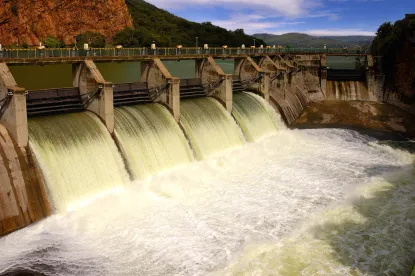Conservation and hydropower representatives issued their Joint Statement of Collaboration on U.S. Hydropower (“Joint Statement”) recently. The dialog that led to the Joint Statement on hydropower started back in 2018 with Stanford University’s Woods Institute for the Environment, the Energy Futures Initiative, and the Steyer-Taylor Center for Energy Policy and Finance. The Joint Statement describes ways to balance the benefits of hydropower to provide a clean source of energy with the possible conservation concerns of development of this source of power. Both sides agree that hydroelectric power can play an important role in decarbonization within the United States.
Currently, hydropower generates 7% of electricity in the United States and more than 50% of renewable energy sources. There are 2,500 hydropower dams in the United States and about 90,000 dams total. This leaves an enormous number of dams open for conversion to add hydropower capacity.
For years, hydroelectric dam construction has created a rift between conservationists and clean energy advocates, with some concerned about the impact these dams have on the health of fisheries. Others focus on the need for sources of renewable energy in support of hydroelectric dams. The Joint Statement is the result of collaboration of these historically competing interest groups. The Joint Statement identifies seven key areas for these parties to collaborate, including the following:
-
Accelerate Development of Hydropower Technologies and Practices to Improve Generation Efficiency, Environmental Performance, and Solar and Wind Integration
-
Advocate for Improved U.S. Dam Safety
-
Increase Basin-Scale Decision-Making and Access to River-Related Data
-
Improve the Measurement, Valuation of and Compensation for Hydropower Flexibility and Reliability Services and Support for Enhanced Environmental Performance
-
Advance Effective River Restoration through Improved Off-Site Mitigation Strategies
-
Improve Federal Hydropower Licensing, Relicensing, and License Surrender Processes
-
Advocate for Increased Funding for U.S. Dam Rehabilitation, Retrofits and Removals
These action items are geared towards both improving fishery resources while also lowering our country’s dependence on fossil fuels for energy. The parties seek to rehabilitate dams already in existence, retrofit dams to increase efficiency, and remove unsafe dams or dams with environmental concerns that cannot be fixed. The 60-day period for comments will end on December 12th. Many believe that hydroelectricity is a largely untapped source of clean energy and that this Joint Statement is a great step towards reaching the potential of this promising energy source.




 />i
/>i

